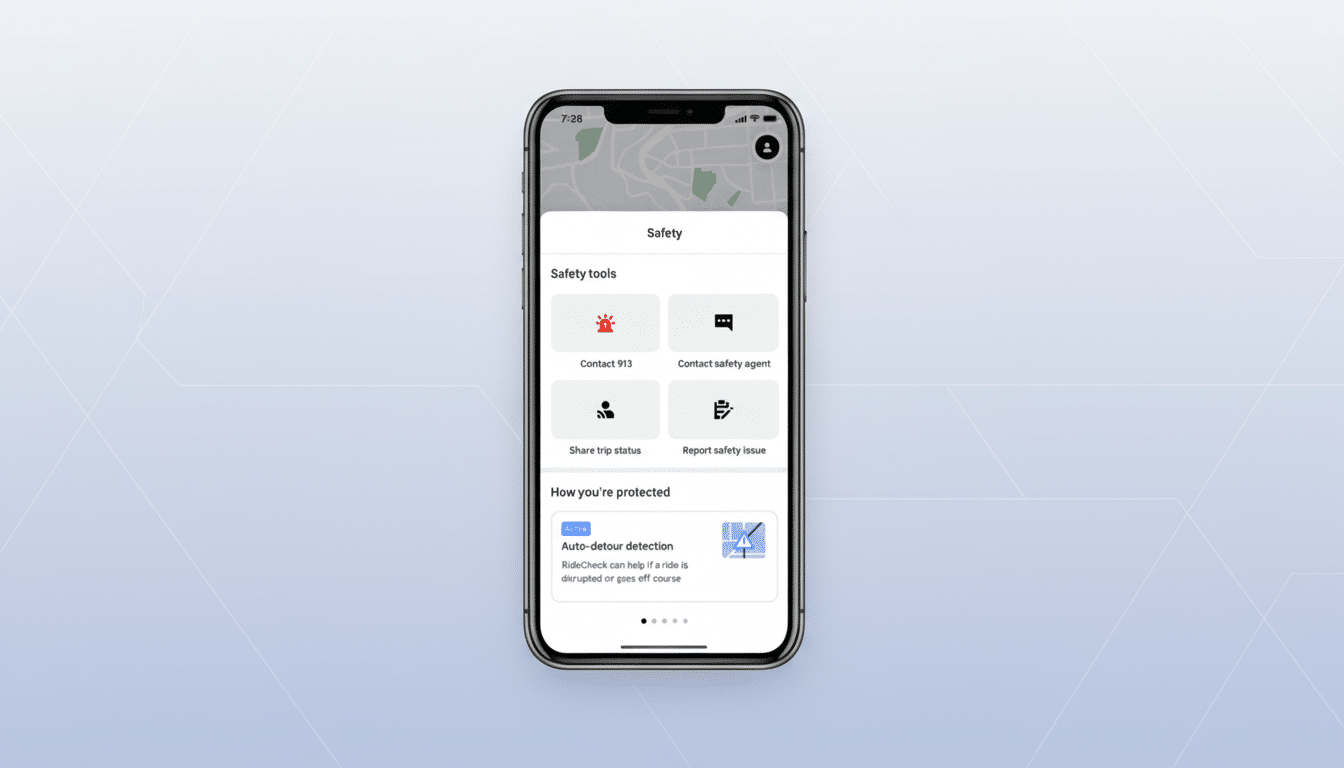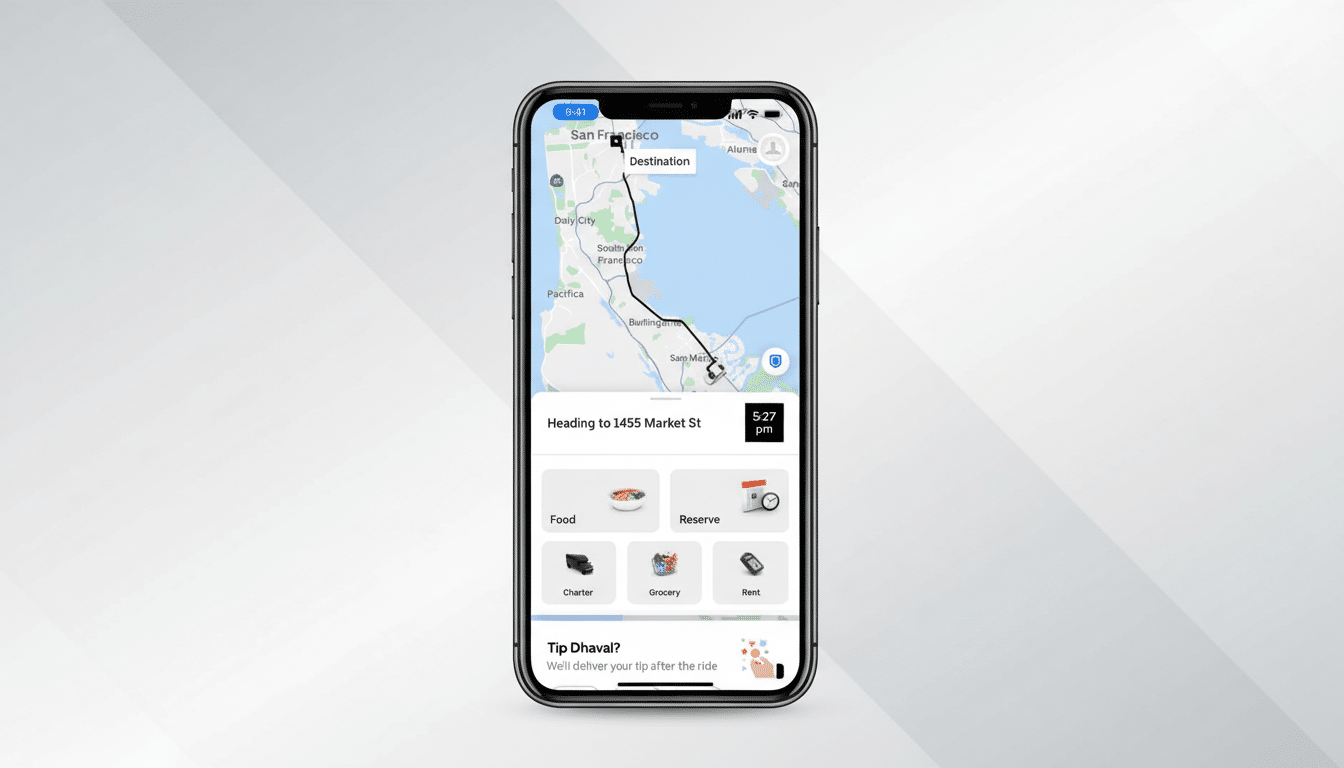Uber has started testing an in-app video recording feature for riders who are willing to pay more for a trip in an effort to solve and prevent violent crimes perpetrated against passengers. The pilot, which had been limited to a small group of drivers, turns a driver’s smartphone into a camera facing the cabin that can capture images of trips — an approach that could cut down on disputes and potential misbehavior while also raising new questions about privacy and data use.
What Uber Is Testing in Its India Pilot Program
The video feature follows on Uber’s introduction of an in-app audio recording option in 2023 in India. It first tested video capture in the U.S. in 2022, and has since opened it up elsewhere including Canada and Brazil. In India, the company hasn’t specified what cities will be part of the testing or how many drivers it is gathering feedback from, but drivers said they’re seeing it as an option within their Safety Toolkit — which includes an SOS button and an audio recording feature.
- What Uber Is Testing in Its India Pilot Program
- How the In-App Video Recording Feature Works
- Why India Is a Critical Testbed for Uber’s Safety Tech
- Privacy and Compliance Questions for In-Car Recording
- Benefits and Trade-offs for Drivers and Riders
- Global Context and Precedents for Uber’s Safety Tools
- What to Watch Next in Uber’s India Video Pilot

Like the visual indicator for audio capture, riders receive an in-trip notification when video recording is enabled. Uber says the tool is meant to capture context in infrequent but high-stakes scenarios — anything from disagreements over routes and fares to episodes that might escalate into safety reports or insurance claims.
How the In-App Video Recording Feature Works
Uber’s system, unlike the dedicated dash cams that can be plugged in through a car charger, relies on the driver’s smartphone camera and archives footage on the device. The company claims recordings are safeguarded through layered encryption and can’t be accessed by Uber unless a driver or rider decides to clip them as part of a safety report. Nothing is deleted, but the app is designed to automatically discard the file after about a week if there’s no report filed.
As far as workflow design, it seems to be all about minimizing friction: Drivers can start recording before or while driving, an on-screen badge lets both sides know that the feature is running, and the file stays with the user unless escalated. And that local-first approach might cut down on data costs in a market where many drivers have budget Android phones and prepaid plans.
Why India Is a Critical Testbed for Uber’s Safety Tech
India is an important market for Uber with high growth, crowded urban centers, high sensitivity to pricing, and frequent switching by consumers between platforms. There is also potential for safety features to be a differentiator: arguments over routes, tolls, surge pricing and, most dangerous of all, cancellations are common friction points for ridesharing in the country — at night or during rush-hour traffic in cities like Delhi, Mumbai, and Bengaluru.
The relatively expensive hardware dash cams are still quite rare among ride-hailing drivers in India because they’re so out of reach — and could be stolen. Adopters may be more interested if there’s an in-app alternative that would work on their existing phones. Rivals have relied on SOS buttons, ride tracking, and driver fatigue alerts through the years, but embedded video capture directly within the ride-hailing app is still uncommon in the country.
Privacy and Compliance Questions for In-Car Recording
The pilot arrives at a complicated regulatory moment. India’s Digital Personal Data Protection Act 2023 focuses on purpose limitation, notice, and user consent for processing personal data that are also applicable to such recording in a vehicle. The Supreme Court’s Puttaswamy decision acknowledging privacy as a fundamental right also influences views about necessity and proportionality.

Uber’s design — local storage, time-limited retention, and user-controlled sharing — is an attempt to address those principles. Still, there are open questions: What if law enforcement asks for footage stored on a device? How do non-English speakers know in real time that they are being recorded? And can riders opt out in any meaningful way aside from canceling a trip? Civil society organizations such as the Internet Freedom Foundation have earlier called for clear consent mechanisms and transparent audit trails in vehicle-based surveillance tools.
Benefits and Trade-offs for Drivers and Riders
For drivers, video can serve as a protective factor in disputes over directions or accusations of misconduct. The feature would be a salve for drivers in New Delhi and Bengaluru, who sometimes fear that route disputes, in which passengers ask to stray from the map only to later complain, are a scam. Visual context can also reinforce insurance and safety investigations, in conjunction with GPS and audio records.
The trade-offs are both practical and moral. Continuous video recording can drain batteries and cause overheating on lower-end phones, and performance quality at night will vary by specific device. Drivers say they will pay close attention to whether the company uses video to adjudicate cases in a fair manner — or sticks with practices that result in refunds and demerits for drivers. Riders, especially women out at night, may see the upside to recording with full disclosure and tight restrictions around access.
Global Context and Precedents for Uber’s Safety Tools
Uber’s safety playbook is blending software-first tools with city-specific policies from an increasingly elaborate toolbox. The company’s safety transparency reports in other parts of the world have said that recordings can be used to resolve conflicts, although India-specific data has not been made public. (Video capture exists in Canada and Brazil, where Uber notes that it can’t see footage unless a user explicitly chooses to share it as part of an incident report — something Indian privacy advocates and regulators are likely to scrutinize.)
What to Watch Next in Uber’s India Video Pilot
Key signals will include adoption rates among drivers, the percentage of trips recorded, and how often video materially leads to a different outcome in safety or support cases. Clear policies on evidence retention, device losses, and the handling of video when multiple reports are filed would build trust. Transparency — like biannual summaries of cases in which video or audio played a role in decision-making — could also provide peace of mind to drivers as well as riders.
Uber does not have a timeline for a broader rollout. How it follows up in India will depend on the early performance of its pilots, discussions with city authorities and civil society organizations, and how other platforms react. Done right, in-app video could be a mainstream safety feature. If not, it could be perceived as yet another level of surveillance in what are already heavily monitored urban trips.

